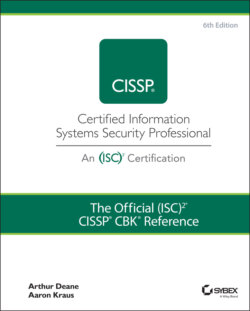Читать книгу The Official (ISC)2 CISSP CBK Reference - Leslie Fife, Aaron Kraus - Страница 97
Industry Standards
ОглавлениеInvestigation is a broad term. There are currently many standards and guidelines offered in this realm, some of which are dependent on the jurisdiction or industry in which the organization operates. This section takes a quick look at some of the most common standards and guidelines that are related to investigations.
ISO/IEC 27043:2015 recommends procedural steps for conducting security incident investigations. These guidelines cover many incident scenarios from the preparation phase all the way through to the conclusion of the investigation. The scenarios covered include incidents such as data loss or corruption, unauthorized access, and confirmed data breaches.
ISO/IEC 27037:2012 provides guidelines for handling digital evidence. This is covered through a four-step process of identification, collection, acquisition, and preservation. Evidence collection and handling is covered across many types of media and scenarios, including magnetic and optical storage media, mobile devices, camera systems, standard computers, and collecting network traffic data from network devices. This publication also covers chain of custody procedures and how to properly exchange evidence between jurisdictions.
NIST SP 800-86, “Guide to Integrating Forensic Techniques into Incident Response,” overlaps significantly in terms of content with the two previous sources. It is the NIST perspective on the digital forensic process. It details how to build a forensic capability within your organization, what that means, and which tools and training your staff will need. The publication also describes how to structure forensic policies, standards, and procedures for your organization and what they should contain. Most importantly, NIST SP 800-86 describes the digital forensic process overall in four phases: collection, examination, analysis, and reporting.
NIST SP 800-101 Revision 1, “Guidelines on Mobile Device Forensics,” has a self-explanatory title. It covers the unique requirements for acquiring, preserving, examining, analyzing, and reporting on the digital evidence present on mobile devices. The technical differences associated with mobile devices are discussed, such as differences in memory type and file structure that affect evidence collection. The publication also discusses sensitive areas that may arise when a mobile device is privately owned.
As you can see from this list of industry standards, evidence management and digital forensics are at the heart of conducting technology-based investigations. Domain 7 of the CISSP CBK covers Security Operations, and we further discuss understanding and complying with investigations in Chapter 7 of this book.
